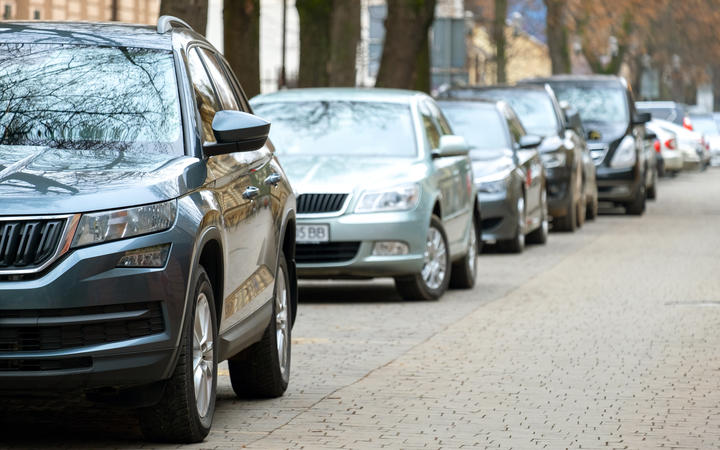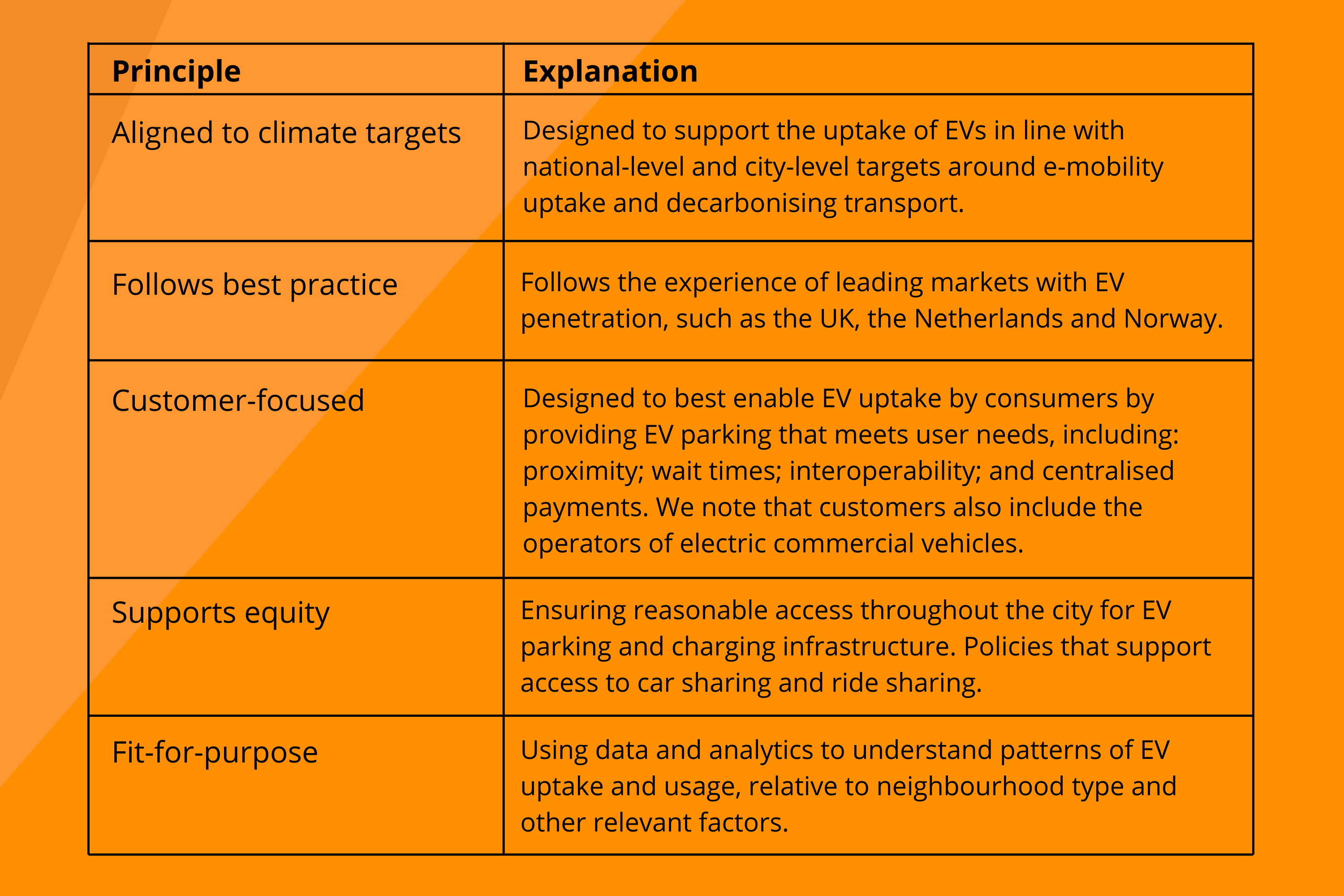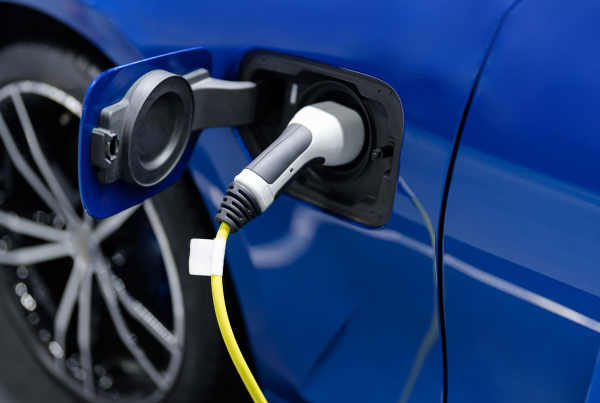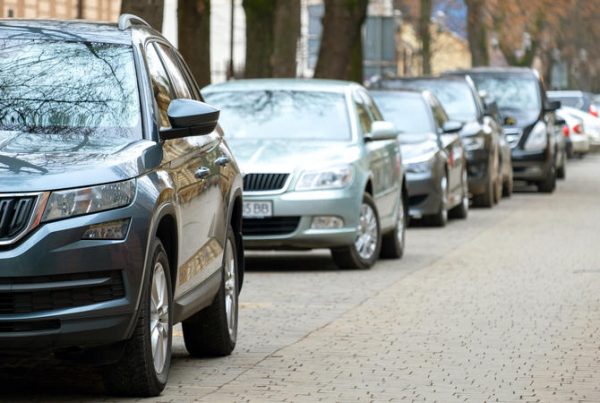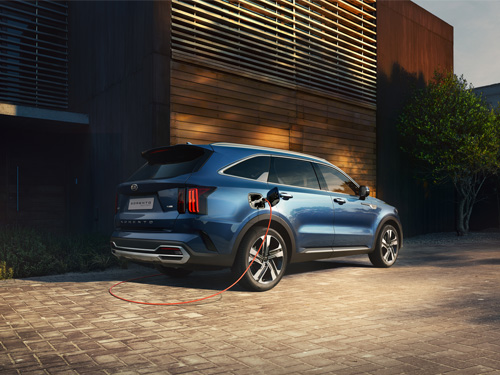Drive Electric utilises the expertise of our board, member base and researchers to make well-informed submissions on policy that relates to the decarbonisation of the transport sector. Below is our submission on Auckland’s Draft Parking Strategy by Auckland Transport. When completed, this strategy will provide the guiding principles and policies for the planning, supply, and management of on-street and AT-controlled off-street parking in Auckland.
Executive Summary
Drive Electric is a not-for-profit advocacy organisation supporting the uptake and mainstreaming of e-mobility in New Zealand, a key part of decarbonising transport.
Drive Electric represents a member base comprising new car OEMs, used car importers and distributors, infrastructure organisations (electricity generators, distributors and retailers, electric vehicle service equipment suppliers), e-bike/scooters, heavy vehicle importers, finance, fleet leasing and insurance companies, along with electric vehicle users.
We have framed this response around our mission, which is to accelerate the uptake of e-mobility in New Zealand. Hence, we have predominantly focussed our response on how the strategy supports the uptake of low emissions vehicles.
The Government’s Emissions Reduction Plan includes a target for zero emission vehicles to reach a 30 percent share of the fleet by 2035. This will require about 1.5 million more EVs over this timeframe, including around 200,000 EV vans and utes.
Population dictates that a large proportion of these will be used in Auckland. In fact, Auckland already has the highest proportion of EV ownership per 1,000 head of population in the country.
We note the AT parking strategy consultation refers to transport objectives on p.35. The first objective is to: “Improve the resilience and sustainability of the transport system and significantly reduce the greenhouse gas emissions it generates.” We note there is no mention of the use of the parking strategy to stimulate the uptake of EVs, in place of ICE vehicles, as a critical part of the strategy to decarbonise transport.
We completely agree that reducing kilometres travelled and increasing uptake of active and public transport are necessary to reduce transport emissions in Auckland.
Therefore we understand the intent of the strategy to reduce on street parking in certain areas. However, at the same time, moving people into electric vehicles if they do choose to own a private vehicle is a critical part of the government’s strategy to reduce emissions from transport. As such, the parking strategy must explicitly support EV uptake as well as support mode shift away from private vehicles.
We are aware that the Government is currently developing a long-term EV charging infrastructure strategy, being coordinated by the Ministry of Transport. This will particularly focus on increasing the access to residential charging. We believe AT’s parking strategy needs to be aligned with both the Emissions Reduction Plan and this forthcoming charging strategy.
Our main point in response to this submission is that Auckland Transport has a vital role to support the uptake of e-mobility through the provision (or facilitation) of public charging in parking spaces, including off-street and on-street. We are concerned that the consultation document underplays the importance of charging infrastructure in managing the transition to electric vehicles and does not link to national direction on this topic.
Key recommendations:
1. AT’s parking strategy must align with New Zealand’s national and Auckland’s climate change targets, particularly around decarbonising transport.
2. Specifically, AT’s parking strategy must support EV uptake in line with national and city targets and policies.
3. AT should collaborate with the central government on the preparation of the forthcoming government long-term EV charging infrastructure strategy.
4. AT’s parking strategy, particularly around the provision of charging infrastructure, must be aligned to that government strategy as well as the targets referred to in recommendations 1 and 2 above.
5. AT needs to consider and understand how Aucklanders will use, charge and park their EVs to inform this parking strategy, noting that EVs are in early stages of adoption with rapid growth predicted.
6. AT needs to review its policy statements relating to the provision of EV infrastructure in light of the first six recommendations and the arguments made in this submission.
7. The parking strategy also needs to consider how best to support the use of commercial electric vehicles, including recognising their range and need for re-charging. Specific ideas are provided in this section 2.4 of this paper.
8. The parking strategy needs to consider how car parking can support the uptake of car sharing and ride sharing, as part of the need to reduce vehicle kilometres travelled. Specific ideas are provided in section 2.5 of this paper.
2.0 Response
2.1 The EV policy statement (p.51)
We support the policy statement, “AT will support EV parking, to encourage uptake.” However, a level of ambition needs to be articulated in line with the city’s and the country’s efforts to decarbonise public transport.
Auckland Council’s climate targets state that by 2030 “40 per cent of light passenger and commercial vehicles to be electric or zero emission” and “40 per cent of road freight is to be electric or zero emission.”
While we acknowledge that reducing kilometres travelled and increasing uptake of active and public transport are necessary to reduce transport emissions in Auckland, it is also a national and local government priority to shift light and commercial vehicles to electric. These goals need not be mutually exclusive; they need to be considered in tandem. As such, any parking strategy must be calibrated to enable such a transition and reduce vehicle kilometres travelled.
Our view is that charging infrastructure needs to lead the uptake of e-mobility in New Zealand, rather than trail it. We need to give consumers the confidence that if they buy an electric vehicle that they will be able to charge it conveniently. Internationally, we are seeing the importance of EV charging being made available through residential off-street parking and in parking facilities operated by local authorities. AT has the responsibility to replicate that level of ambition in this strategy.
Conversely, we have seen that limited charging infrastructure has been one of the main barriers to EV uptake overseas. Markets like China, EU and the UK are massively accelerating the uptake of public charging infrastructure.
AT also needs to consider how Aucklanders will use, charge and park their EVs to inform this parking strategy, noting that EVs are in early stages of adoption with rapid growth predicted. To set a parking strategy that potentially curtails EV use by making it more difficult to own one, while we are at this stage of consumer uptake, could have a confounding effect on Auckland’s decarbonisation objectives.
The UK has recently released Taking Charge: The electric vehicle infrastructure strategy. This document says “local authorities are fundamental to successful chargepoint rollout, particularly for the deployment of widespread on-street charging. They are ideally placed to identify the local charging needs of residents, fleets and visitors.” In fact, the UK is mandating local authorities to develop and implement local charging strategies to plan for the transition to a zero emission vehicle fleet.
We acknowledge that the UK central government is providing a financial investment into local authorities to provide on-street charging. We recommend that a similar scheme be explored with the central government, under the development of the EV charging infrastructure strategy. We also acknowledge that there are other issues that require national coordination, including around energy supply and expense of accessing the grid. We encourage AT to work with central authorities on resolving these matters.
The AT Parking strategy must be clear in how its settings will accelerate the transition
towards e-mobility and set concrete targets accordingly.
2.2 Principles for EV parking
We recommend some principles to consider when setting the parking strategy as it relates to EVs and charging EVs.
When providing public EV charging infrastructure, best practice is to:
1. Make it easy for people to pay
2. Make it easy for people to find
3. Use a single payment metric
4. Ensure the network is reliable
5. Make it accessible and safe
2.3 Comments on AT policy details related to EVs p.51
This section makes specific comments on the four areas of policy detail on p.51.
1. AT may provide dedicated EV car parking spaces within AT-managed parking facilities (which may include charging) and may provide dedicated car spaces on-street at key locations (without charging).
Dedicated EV parking spaces should contain charging facilities, and should do so in order to meet the definition of being an EV mandated car parking space. These spaces need to be regulated and enforced (e.g. time limits, EV only etc.). There seems to be limited use for EV-only car parks that don’t provide charging facilities.
AT should set an ambitious target, guided by the principles above, about the number of EV car parks with charging capability to be rolled out over the next five years.
Any new car parks being established that are either AT-controlled or require permitting from Council should include a mandated percentage of EV car parks with charging infrastructure.
Finally, AT should look at providing access to Council owned / controlled ‘real estate’ to enable private companies to provide public charging facilities. This can be a commercial relationship.
2. Any EV parking provision will be scaled to support an increase in the overall light vehicle EV fleet, but will ultimately be removed as a dedicated provision once a majority of new light vehicles sold in Auckland are EVs.
EV parking provision should be scaled up, with charging facilities, across the city. In a future dominated by EVs, there seems to be no need to scale this back. This infrastructure must remain. Our initial view is that at least 10 per cent of off-street residential parking should be dedicated to EV charging. This may look different in different neighbourhoods, e.g. densely populated neighbours will need more on-street charging if they don’t have garages.
3. AT may facilitate third party installation of publicly available EV chargers at AT-managed off-street parking facilities (subject to formal agreement), consistent with the wider management of that parking space.
We support this. However, this can’t be an option, it must be the approach.
4. AT will not typically permit EV chargers on-street, due to the need to retain future flexibility over the reallocation of space, to avoid issues with perceived privatisation/ commercialisation of road space and to avoid safety issues associated with charging cables.
We reject this entirely. AT must provide or facilitate the provision of residential off-street charging, in line with international best practice and the principles provided above.
We disagree that providing regulated charging facilities on-street creates ‘issues with perceived privatisation/commercialisation’. These are already commercial spaces.
For instance, on-street car parks are used by couriers and delivery drivers. Car parks are often metered and require payment by the user. Instead, providing appropriate numbers of on-street car parks with EV charging gives residents choice and convenient access to a necessary facility that benefits all citizens through reduced emissions.
We also note safety issues can be mitigated, as they have been demonstrated in Europe over a number of years. See the UK charging strategy for more information.
On-street parking is a necessary addition to at-home charging, local charging hubs and electric forecourts (equivalent to current petrol or diesel refuelling). It is particularly necessary in higher density areas with lower levels of off-street parking.
2.4 Commercial electric vehicles
The AT strategy should specifically consider the role of electric freight vehicles, particularly metro delivery trucks which will serve businesses and households in urban centres, including the proposed Queen Street Valley Zero Emissions Area. Such metro electric trucks avoid significant daily carbon emissions per vehicle and improve air quality.
Metro trucks will often need a top up charge during the day to complete typical daily driving distances of 100-300 km, particularly if they are also using on-board batteries to power refrigerated bodies and tail lifts.
Through the Parking Strategy, AT should:
● Ensure there is sufficient space allocated at some public fast charging facilities for large electric courier vans and metro trucks;
● Ensure there is sufficient loading zone areas in urban centres for electric trucks to service businesses and households to maximise range; and
● Consider whether authorised metro trucks could pay to use charging facilities at AT’s electric bus depots during the day when these facilities will be underutilised by electric buses. This could be a for pay service which could generate revenue and cover the costs of any depot conversion required to support this.
2.5 Rideshare and car share parking
We support the policy statement and policy detail as provided. However, we believe there needs to be much more detail provided about how Auckland Transport can facilitate the use of carsharing and mobility as a service (MaaS).
To reach Auckland’s climate targets, we need to both promote the electrification of the fleet and also reduce vehicle kilometres travelled. In effect, this means fewer people owning and/or using their vehicles. We need to therefore promote rideshare (booking a seat in a car) along with carshare (booking a car) to contribute to Auckland’s targets.
MaaS could also play an important role in managing an equitable transition, by providing lower income communities affordable and convenient transport options.
At present, we see that with car share providers that provide both ICE and EV vehicles that the ICE options are about 40 per cent cheaper to book. This incentivises consumers to take these options. AT should explore ideas to help encourage the uptake of EVs by both the car share companies and consumers of those services. One option would be to explore whether zero emissions car share vehicles receive free parking, and ICE vehicles in those schemes should pay for parking.
Currently none of the carshare companies Zilch, Mevo or Cityhop offer rideshare however if they were going to get free parking for EVs it might motivate them to develop this service for their car share businesses.

